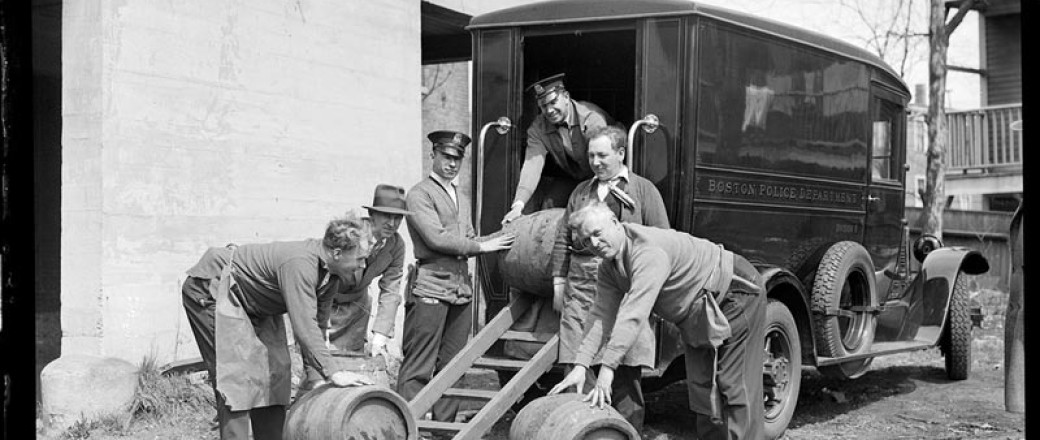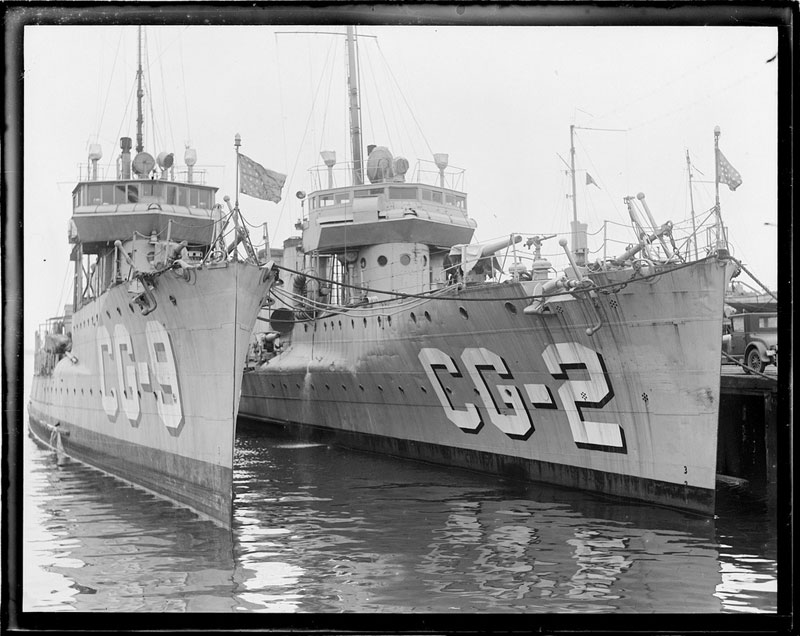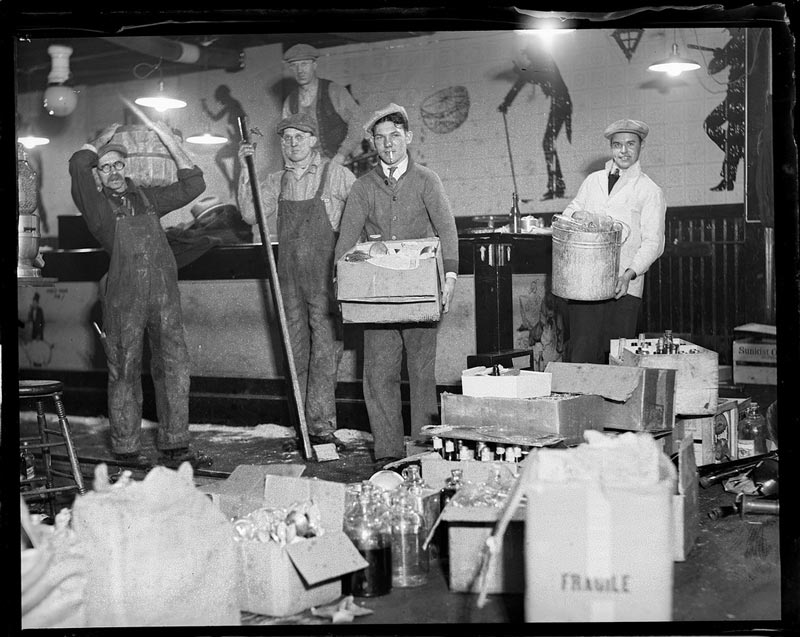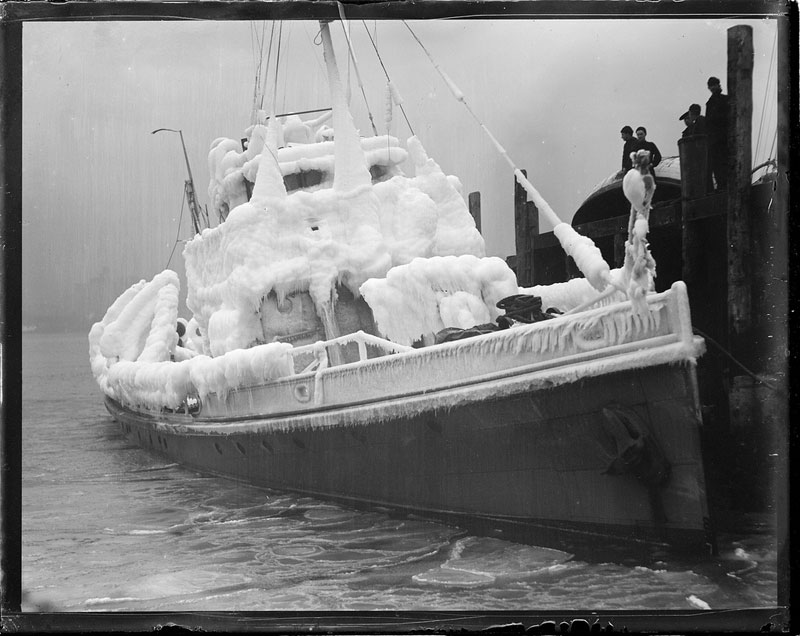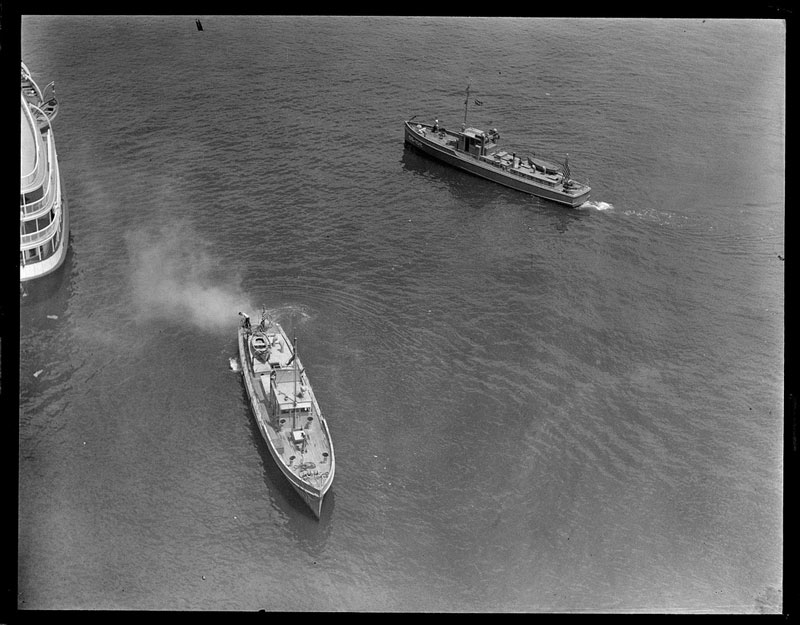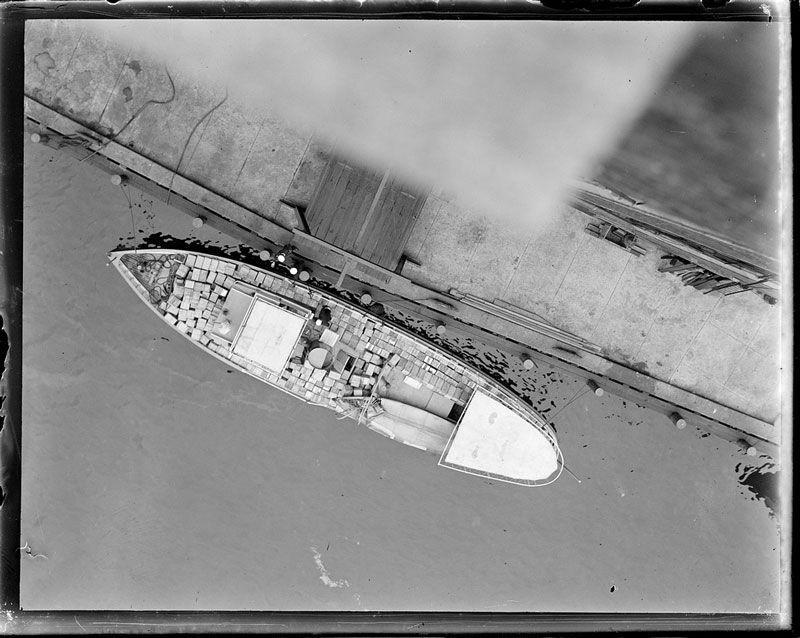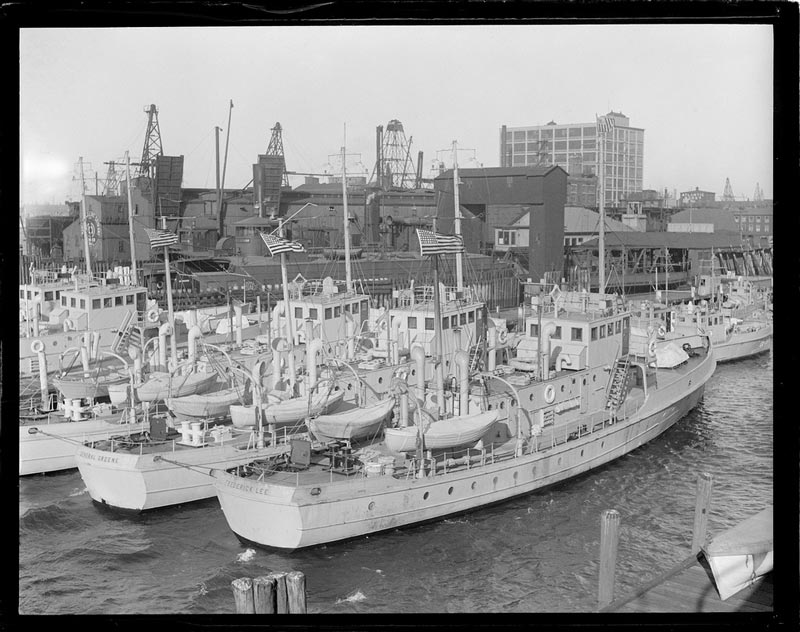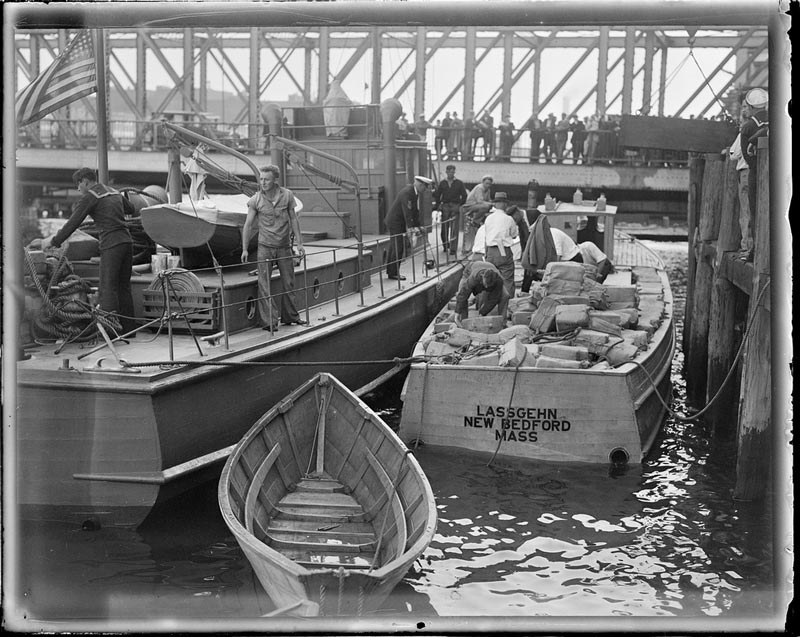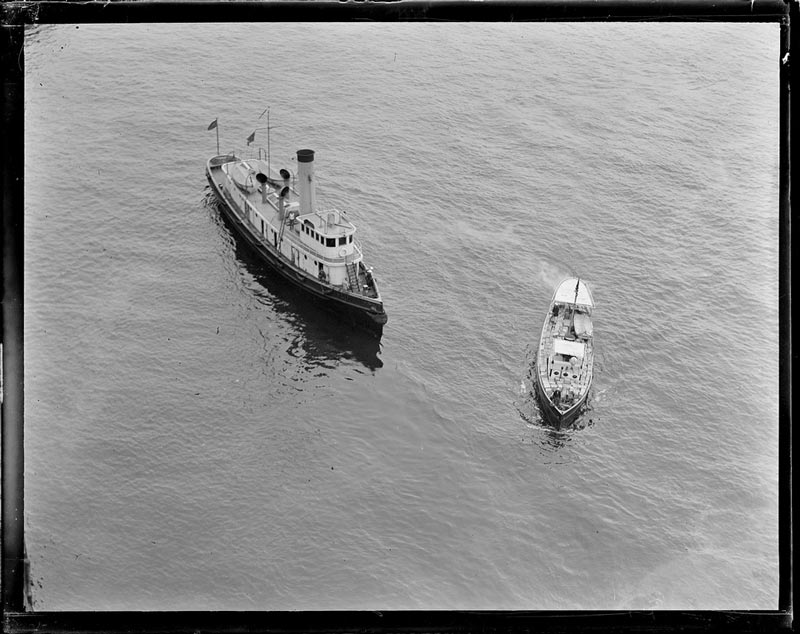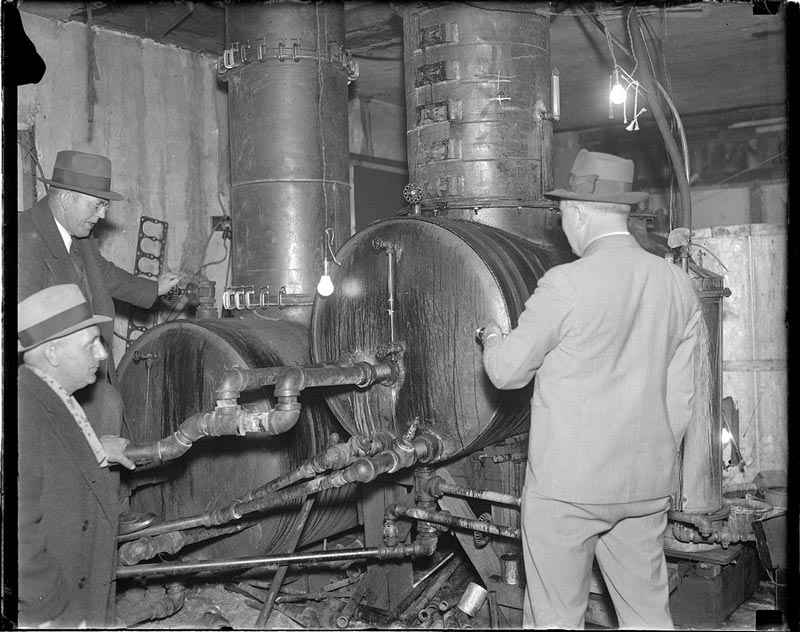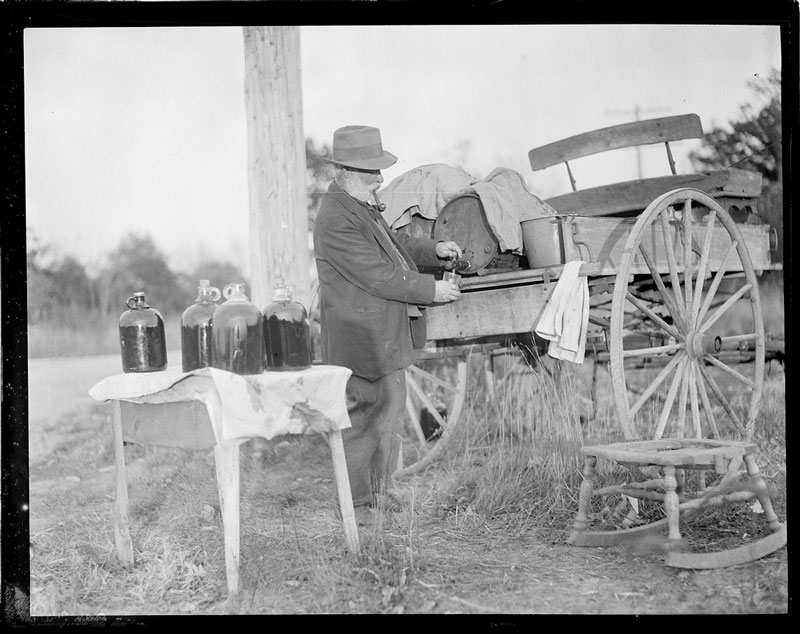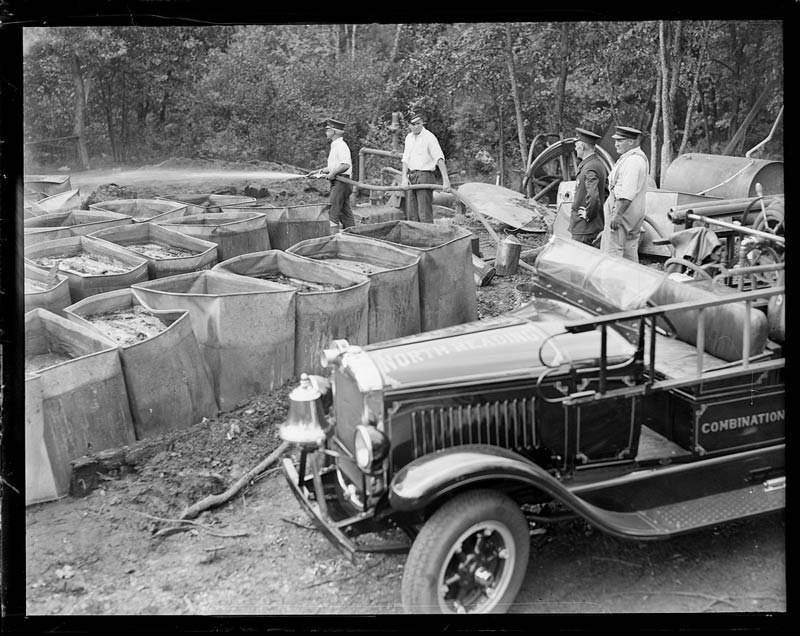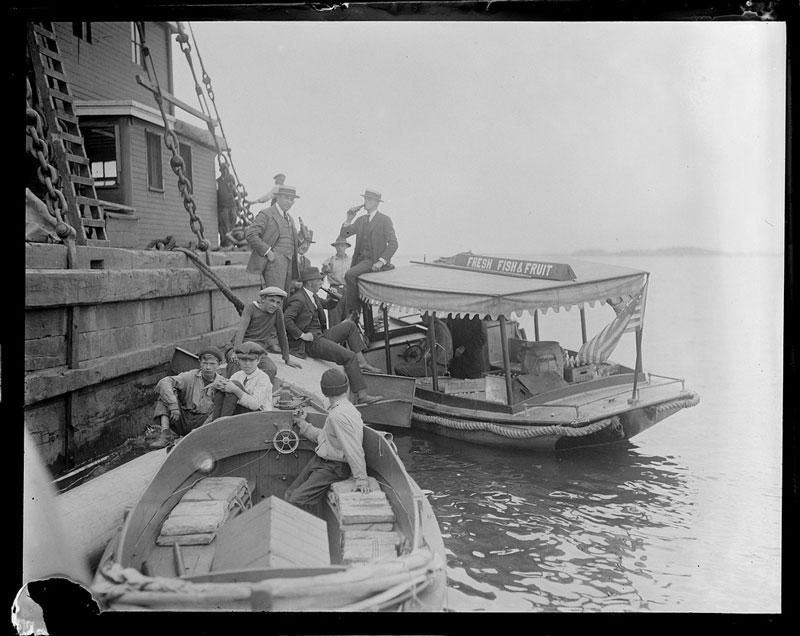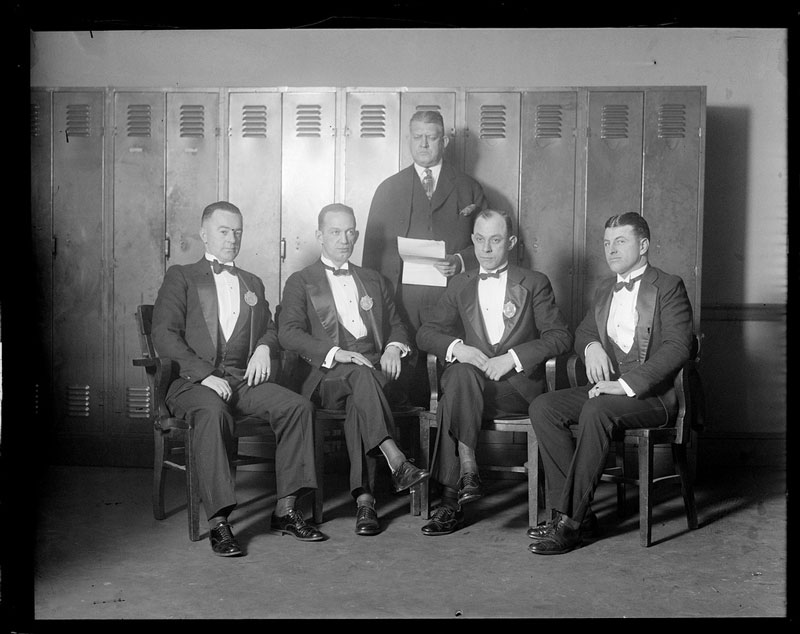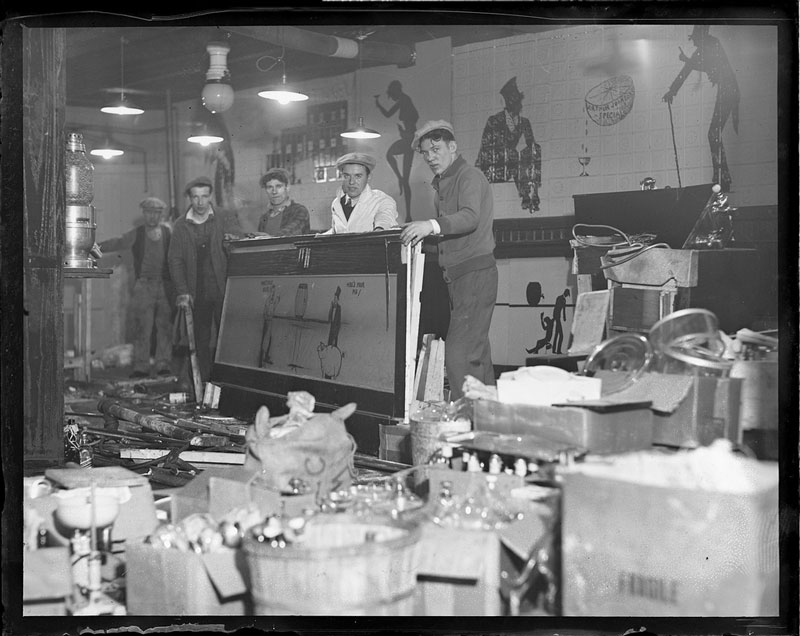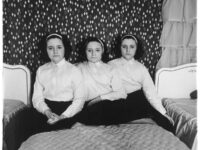Prohibition in the United States was a national ban on the sale, manufacture, and transportation of alcohol, in place from 1920 to 1933. The ban was mandated by the Eighteenth Amendment to the Constitution, and the Volstead Act set down the rules for enforcing the ban and defined the types of alcoholic beverages that were prohibited. Prohibition ended with the ratification of the Twenty-first Amendment, which repealed the Eighteenth Amendment, on December 5, 1933.
The introduction of alcohol prohibition and its subsequent enforcement in law was a hotly debated issue. The contemporary prohibitionists (“dries”) labeled this as the “Noble Experiment” and presented it as a victory for public morals and health. The consumption of alcohol overall went down by half in the 1920s; and it remained below pre-Prohibition levels until the 1940s.
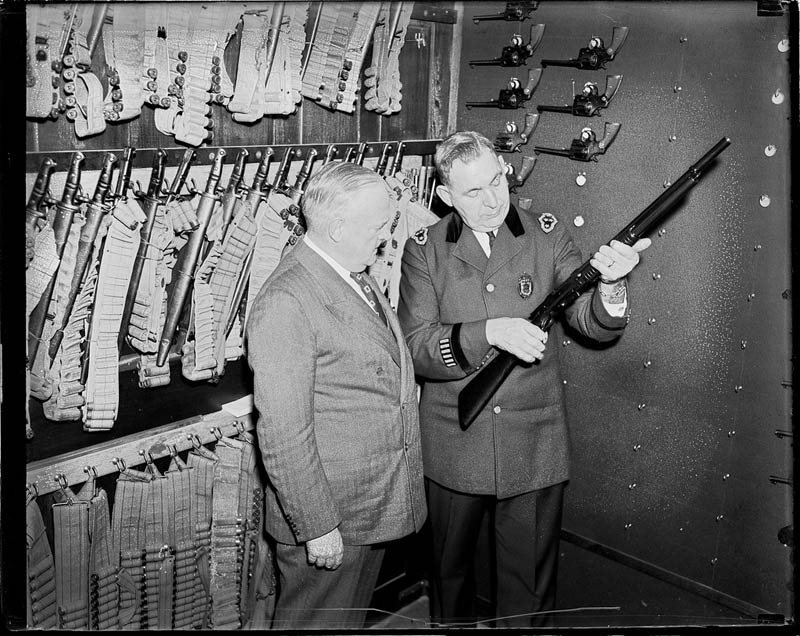
Commissioner McSweeny and Superintendent King. Police Headquarters (possibly William E. Payne – Gunsmith / George F. Smith – Handwriting Expert).

